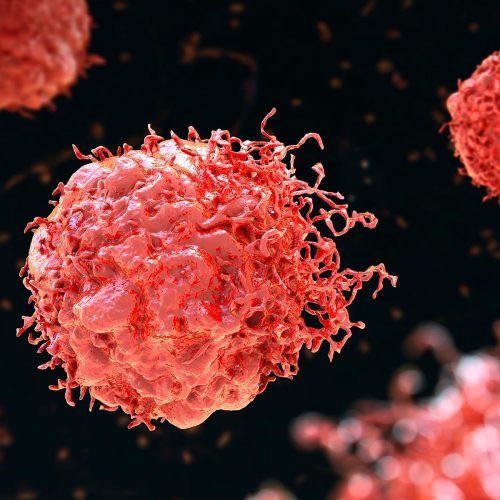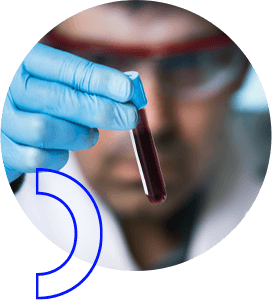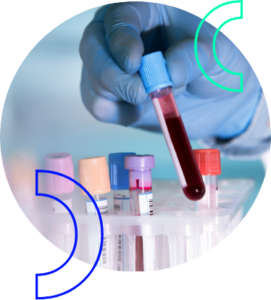Viable Cells
Cryopreserved Primary Cells
Primary cells are cells which are directly isolated from human or animal tissues and that reflect the biological diversity of the different body districts and donors they are isolated from. They differ from continuous cell lines in that cell lines are usually artificially created by immortalizing healthy cells or by selecting tumor cells which are attaching to plastic and proliferating in culture.
Characteristics and uses of primary cells
Since primary cells are directly isolated from living or intact tissues (pre- or post-mortem) without previous genetic manipulation, they reflect the biological diversity of the donor or tissue they are isolated from. Moreover, cells isolated from healthy donors present distinctive characteristics of healthy cells in the body such as:
- A limited proliferation and lifespan (usually calculated in terms of population doublings)
- A low mutation rate
- Contact inhibition
- Intact signaling pathways
- Intrinsic biologic variability
These characteristics are essential for the life of living organisms under normal conditions: in most of the somatic cells (all cells apart sperm and egg cells, also called germ cells, and stem cells) cell division is associated with a reduction in the length of telomers (the terminal part of the chromosomes). With subsequent cell divisions, cells with short telomers lose the stability of their chromosomes, leading to increased mutation rates, senescence and finally cell death. Several signaling pathways from nearby cells inform the cells when it‘s time to stop dividing (a process that takes place also in in vitro cultures after reaching cell confluence) and avoid cell death.
How do primary healthy and tumor cells differ from cell lines?

Single cells evading this senescence mechanism by restoring the function of telomerases (particular enzymes involved in the repair of telomers) or disrupting the signaling loops leading to contact inhibition will continue proliferating and accumulating mutations, thus significantly differing from healthy cells in their biology and potentially transforming into tumor cells. It is possible to recreate the same conditions by artificially restoring the function of telomerases. Cells created from this process are normally called „cell lines“, as a line of cells is created from a single mutated cell or clone. As such, cell lines do not represent a population of different cells isolated from the same tissue, but exact copies of the same cell/clone.
Primary tumor cells are cells isolated from primary tumor tissues and reflecting the characteristics of the original tumor tissue in vivo. Although primary tumor cells (tumor dissociated cells) represent the same intrinsic biologic variability of healthy primary cells, they often lack a limited proliferation/lifespan and contact inhibition in vivo, while their high mutation rates lead to an altered signaling comparing to healthy cells. Despite their apparent similarity to cell lines in this respect, primary tumor cells do not often proliferate or survive for a long time in vitro, and significant effort is required to develop plastic-adherent clones from primary tumor cells. Also in this case, adhering tumor cells form cell lines that do not represent the biological variability at a cellular level in the primary tumor, but merely constitutes copies of the original plastic-adherent cell/clone.
BIOMEX’s Cryopreserved primary cells
BIOMEX sources its primary cells either from the own plasma center in Central Europe or through collaborations with hospitals and research centers. All cells are ethically sourced and anonymized before undergoing QC testing.
Donor and cell-specific information provided with the certificate of analysis include demographics, serology, HLA class I and II characterization, FCGR3A Polymorphisms, smoking status, hematological analysis pre- and post-thaw (for immune cells), medications, allergies and eventual other diseases. In addition, cells are tested for sterility and cell activation or functionality according to the cell type. Additional testing, vialing specifications or dedicated isolation of particular cell types can be evaluated according to your needs.
For more information visit our dedicated page on Services.
-
Peripheral Blood Mononuclear Cells (PBMCs)
-
CD34+ Hematopoietic Stem Cells from Cord Blood, Mobilized Leukopaks and Bone Marrow
-
Mesenchymal Stem Cells from Bone Marrow
-
Adipose-derived Stem Cells
-
Dental Pulp Stem Cells
Are cryopreserved cells right from my study?
(and why you should read this)
If you already use primary cells for your studies and isolate the cells yourself, you may never have asked yourself this question. But why would commercially available cells be useful for you?
Sourcing, isolation and characterization of primary cells involve spending a considerable amount of time and funding. Especially the primary and accessory materials, time and personnel costs involved in characterization, cell expansion and cryopreservation can be high for the cell quantities required in routine assays, where donor variability may be preferred over larger batch sizes per donor. As a result, much of the biological material gets wasted or is not used, and the combined cost of personnel and materials is usually far greater than the price of cryopreserved cells from commercial manufacturers, who can spread these costs over many users.
Moreover, in-house cell isolation forces you to schedule your experiments according to the logistics of your isolations, and any failed isolation or significant variability between productions will constitute a major setback to your experiments in addition to the production time, delaying your project and potentially your access to funding/budget or lowering your lab’s output in terms of publications.
A simple calculation for the isolation of an adherent cell type includes:
1
Sourcing
(1 day to several months depending on the tissue)
2
Isolation
(1 day to 1 week depending on the cell type)
3
Expansion & Cryopreservation
(ca 1 week)
4
Thawing & Characterization
(1 day to 1 month)
5
Sterility Testing
(up to 3 weeks)
Take into consideration your sourcing schedule and your cell type of interest and you will realize that you are often spending more time isolating cells than generating data! Finally, if you are isolating cells yourself, you are likely bound by an ethical permission by an ethical committee. According to the agreed informed consent and the data collected, you might not have all data relevant for your study.
If particular demographics and the clinical history of your donors are relevant for your study, consider if commercial manufacturers might have a solution for you.
Our Experts for Life Sciences
Unlock the potential of your research with our high-quality biospecimens and expert services. At BIOMEX, we believe that working with our customers is the best way to improve project success and reduce costs and development time.


